Bear rally buyers are in denial. When selling their homes, they consistently price over the market and far higher than bubble era buyers who have capitulated.
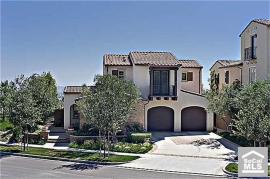

Irvine Home Address … 41 SMALL Grv Irvine, CA 92618
Resale Home Price …… $1,550,000

Why bother? it's gonna hurt me
It's gonna kill when you desert me
This happened to me twice before
It won't happen to me anymore
Weezer — Why Bother
Home prices in California are notoriously volatile. Stoked by their realtor's advice and enabled by foolish lenders, buyers get motivated by greed and fear to bid prices up to the stratosphere. When the inevitable crash occurs, everyone is surprised. Many people believe trees really can grow to the sky.
The psychological stages of loss are the same for all bubble buyers. Most people buy because they believe prices are going up. This was particularly true for bubble buyers, but bear rally buyers from 2009 fell victim to the same faulty thinking.

The buyers from 2004-2006 have already gone through denial and fear, and most have capitulated and either let the property go to foreclosure or sold short. Bear rally buyers are still in the initial stages. They believe they bought at the bottom, so the are still in the denial stage we watched most bubble buyers go through in 2007. The most obvious indicator of denial is the initial asking price of a bear rally knife catcher. According to a study by Zillow, buyers from the bear rally consistently overprice their properties.
Sellers Who Bought Post-Bubble More Likely to Over-Price Home
July 14th, 2011
Imagine two identical houses built in the same year in the same neighborhood. House A was last purchased in 2006 and House B in 2008. House A is listed at its estimated fair market value of $300,000. Although it would be logical to assume that House B would list with a similar asking price, new research shows that it would, in fact, list at $350,000 on average, a $50k premium! Why the 16 percent price difference?
Because bear rally buyers are still in denial. It's the only explanation which is consistent with what we know about human behavior.
An analysis of seller behavior reveals that homeowners who bought after the peak of the national market in June 2006 dramatically over-price their homes relative to its estimated market value. In a separate survey fielded by Zillow, 17 percent of sellers who purchased post-bubble claim that their primary factor in pricing their house is their original purchase price. This compares with 9 percent who bought during the run-up to the bubble and 4 percent who bought before that.
It's human nature to price a property at break even and see what happens. Just like winning the lottery, a wouldbe seller might get lucky and find a foolish buyer who is willing to overpay.
In the chart below, the blue line is showing the difference between the current list price and the estimated market value of the home with the year the house was last sold running along the X axis. The green line represents the difference between the current list price and the prior purchase price. Notice in the green line that current sellers that purchased their home since 2009 have been pricing their house at 10% higher than what they purchased it for just 1-2 years ago. This is in spite of the fact that over the last two years the national real estate market has depreciated by 10 percent. This difference is represented in the blue line which shows that sellers who bought during this period are pricing around 20% above market rate. Not only are these sellers ignoring the losses they have taken since purchase, but they’re trying to claw back all of their closing costs too it seems!
Obviously the idea that your largest asset has been devalued significantly is difficult to accept, however, people who bought in the run-up to the bubble are seemingly more willing to confront this reality than those who purchased after the peak.
The further along the seller is in the process of accepting their loss, the more likely they are to price their property to sell. Selling for whatever one can get is the essence of capitulation..png)
In fact, relative to sellers who purchased their home before 2002, those who bought while the bubble was expanding rapidly are comparatively underpriced. When first placed on the market, the typical house is priced at roughly 10 percent above its estimated market value, but sellers from 2006 touch as low as 6.4 percent. Looking at sellers who bought on either side of the market peak nationally reveals stark differences between these two groups. Sellers who bought in January 2006 overprice their home by only 8 percent, while those who bought in January 2009 overprice by 22 percent.
Many keystrokes have been devoted to the downward stickiness of prices. Fortunately, the bear rally buyers bought closer to the bottom than to the top, and most of them used conservative conventional financing because it was the only financing available at the time. These people will still be trapped in their homes for years, but they should be able to afford the payments.
Sellers who bought post-bubble seem to think that since their home purchase occurred after the peak of the market, and thus home values were already significantly discounted relative to the peak, the seller escaped the worst of the bubble. The problem is that “The Bubble” didn’t pop so much as steadily deflate for the better part of 5 years now, and current home values now represent what they were worth in 2003.

Said differently, assuming your market followed the national trend, unless you bought your house before 2003, you should be selling it at a loss now. The closer to 2006-2007 you bought, the bigger that loss should be.
This fact is why I felt such a sense of urgency to write for the IHB. I started in February of 2007 and tried to warn everyone that the market was on the edge of a major fall. Those who listened to me are not trapped in an underwater home right now. Those who didn't….
.png)

We know there are a million numbers to keep in your head when looking at a potential property, and that by no means does every property purchased in 2008-2010 is dramatically overpriced. However, I humbly suggest that when looking at properties, you keep one more very important, and very simple, statistic in mind: Previous Year of Purchase.
Methodology:
Zillow’s analysis was done by taking one million currently for sale homes with prior sale data since 1999 and looking at the difference between the current list price and the previous sale price. We then compared the change in the Zillow Home Value Index of that property’s zip code from when it was previously sold to now. These data were grouped by month and the median value, as well as the median difference between the two metrics, was then calculated. The resulting graph and data as well as the survey information yielded the above conclusions
The takeaway from this article is when negotiating to buy a house as we enter this bottoming phase, be wary of bear rally sellers. They will not be as motivated, so they will be less likely to lower price to make a deal happen. It's the bubble buyers who have capitulated that you should be looking for.
An Irvine bear rally buyer-seller
Portola Springs has become the forgotten village. Built at the peak, all homeowners there have properties worth less than they paid, and the Irvine Company seems in no hurry to build this community out. The seller of today's featured property paid $1,362,500 on 11/14/2008, and now he believes the property has appreciated 15%. Since this property has actually declined in value, this asking price is consistent with the Zillow study referenced above which noted sellers who bought since 2006 tend to overprice their homes by 22%.
——————————————————————————————————————————————
This property is available for sale via the MLS.
Please contact Shevy Akason, #01836707
949.769.1599
sales@idealhomebrokers.com


Irvine House Address … 41 SMALL Grv Irvine, CA 92618
Resale House Price …… $1,550,000
Beds: 3
Baths: 4
Sq. Ft.: 3577
$433/SF
Property Type: Residential, Single Family
Style: Two Level, Tuscan
View: Catalina, Coastline
Year Built: 2008
Community: Portola Springs
County: Orange
MLS#: S664038
Source: SoCalMLS
On Redfin: 67 days
——————————————————————————
Modern Luxury and Prime Location with Panoramic Views. Irvine's prestigious Portola Springs absolute best lot. Unique 180 degree views to the coast and Catalina. Set up as 3 bedroom but can easily be made 4 or 5 bedroom. 3577 sq ft of feature-laden luxury in this 3 year old extensively upgraded home. Six figures in upgrades put into the house. Knotted wood floor, downstairs resort-like master suite with room-sized closet. Laundry rooms upstairs and down. Huge kitchen/family area, relaxing atrium, security system, cat 5 wiring with 7 outlets. Teen/Bonus room upstairs with 2 bedrooms and bathrooms. Kitchen has large range, built-in fridge and a huge island for entertaining. Energy-efficient lights. Back yard has amazing panoramic views impossible to match in the area. Built in Bar-B-Q, and elec retractable awning for hot summer days. This really is luxury with prime location. Superb Irvine School District. Community Jnr Olympic pool, 18 N'hood parks, Basketball Ct, community cntr.
——————————————————————————————————————————————-
Proprietary IHB commentary and analysis![]()
Resale Home Price …… $1,550,000
House Purchase Price … $1,362,500
House Purchase Date …. 11/14/2008
Net Gain (Loss) ………. $94,500
Percent Change ………. 6.9%
Annual Appreciation … 4.6%
Cost of Home Ownership
————————————————-
$1,550,000 ………. Asking Price
$310,000 ………. 20% Down Conventional
4.19% …………… Mortgage Interest Rate
$1,240,000 ………. 30-Year Mortgage
$322,135 ………. Income Requirement
$6,057 ………. Monthly Mortgage Payment
$1343 ………. Property Tax (@1.04%)
$450 ………. Special Taxes and Levies (Mello Roos)
$323 ………. Homeowners Insurance (@ 0.25%)
$0 ………. Private Mortgage Insurance
$149 ………. Homeowners Association Fees
============================================
$8,322 ………. Monthly Cash Outlays
-$1354 ………. Tax Savings (% of Interest and Property Tax)
-$1727 ………. Equity Hidden in Payment (Amortization)
$463 ………. Lost Income to Down Payment (net of taxes)
$214 ………. Maintenance and Replacement Reserves
============================================
$5,918 ………. Monthly Cost of Ownership
Cash Acquisition Demands
——————————————————————————
$15,500 ………. Furnishing and Move In @1%
$15,500 ………. Closing Costs @1%
$12,400 ………… Interest Points @1% of Loan
$310,000 ………. Down Payment
============================================
$353,400 ………. Total Cash Costs
$90,700 ………… Emergency Cash Reserves
============================================
$444,100 ………. Total Savings Needed
——————————————————————————————————————————————————-
.jpg)

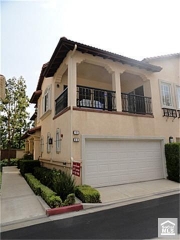
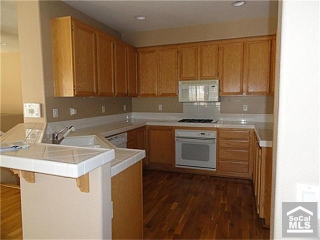

 Government intervention in financial markets is typically a bad idea. The usual result is to shift the consequences (losses) from those who deserve to bear the brunt of their mistakes — in this case lenders and borrowers — on to those who don't deserve to pay a price — in this case renters and ordinary taxpayers. What compelling reason is there to force renters who did not participate in the bubble mania to pay the bills?
Government intervention in financial markets is typically a bad idea. The usual result is to shift the consequences (losses) from those who deserve to bear the brunt of their mistakes — in this case lenders and borrowers — on to those who don't deserve to pay a price — in this case renters and ordinary taxpayers. What compelling reason is there to force renters who did not participate in the bubble mania to pay the bills?






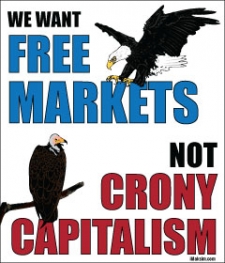


 That criticism is wrong on many levels. First, the basic premise that foreclosures should be reduced is wrong. Foreclosure are key to the financial recovery. If policymakers continue to define the problem incorrectly, they will continue to come up with solutions to the wrong problem which will inevitably create other problems.
That criticism is wrong on many levels. First, the basic premise that foreclosures should be reduced is wrong. Foreclosure are key to the financial recovery. If policymakers continue to define the problem incorrectly, they will continue to come up with solutions to the wrong problem which will inevitably create other problems.


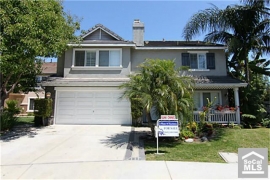











.png)

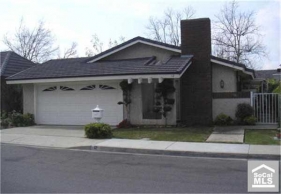
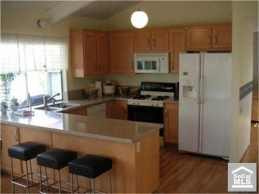

.jpg)





 The owner of todays featured property bought on 4/26/2005 for $675,000. This near peak purchase was financed with a $540,000 first mortgage and a $72,101 second mortgage, and a $62,988 down payment. They didn't refinance, but falling prices have left them underwater. The stopped paying the mortage back in mid 2009, and they have been negotiatiing a short sale ever since.
The owner of todays featured property bought on 4/26/2005 for $675,000. This near peak purchase was financed with a $540,000 first mortgage and a $72,101 second mortgage, and a $62,988 down payment. They didn't refinance, but falling prices have left them underwater. The stopped paying the mortage back in mid 2009, and they have been negotiatiing a short sale ever since.

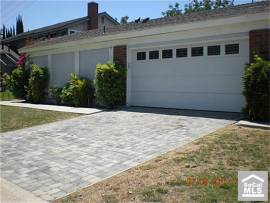






.jpg)
